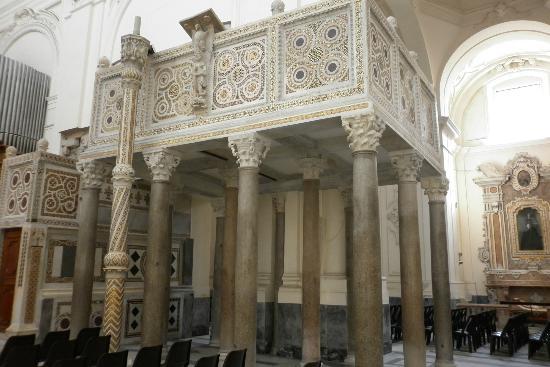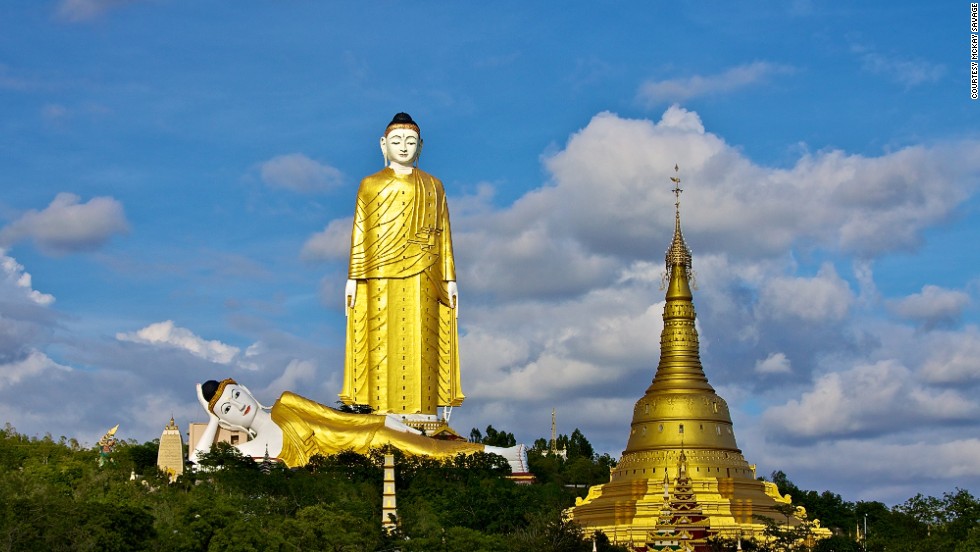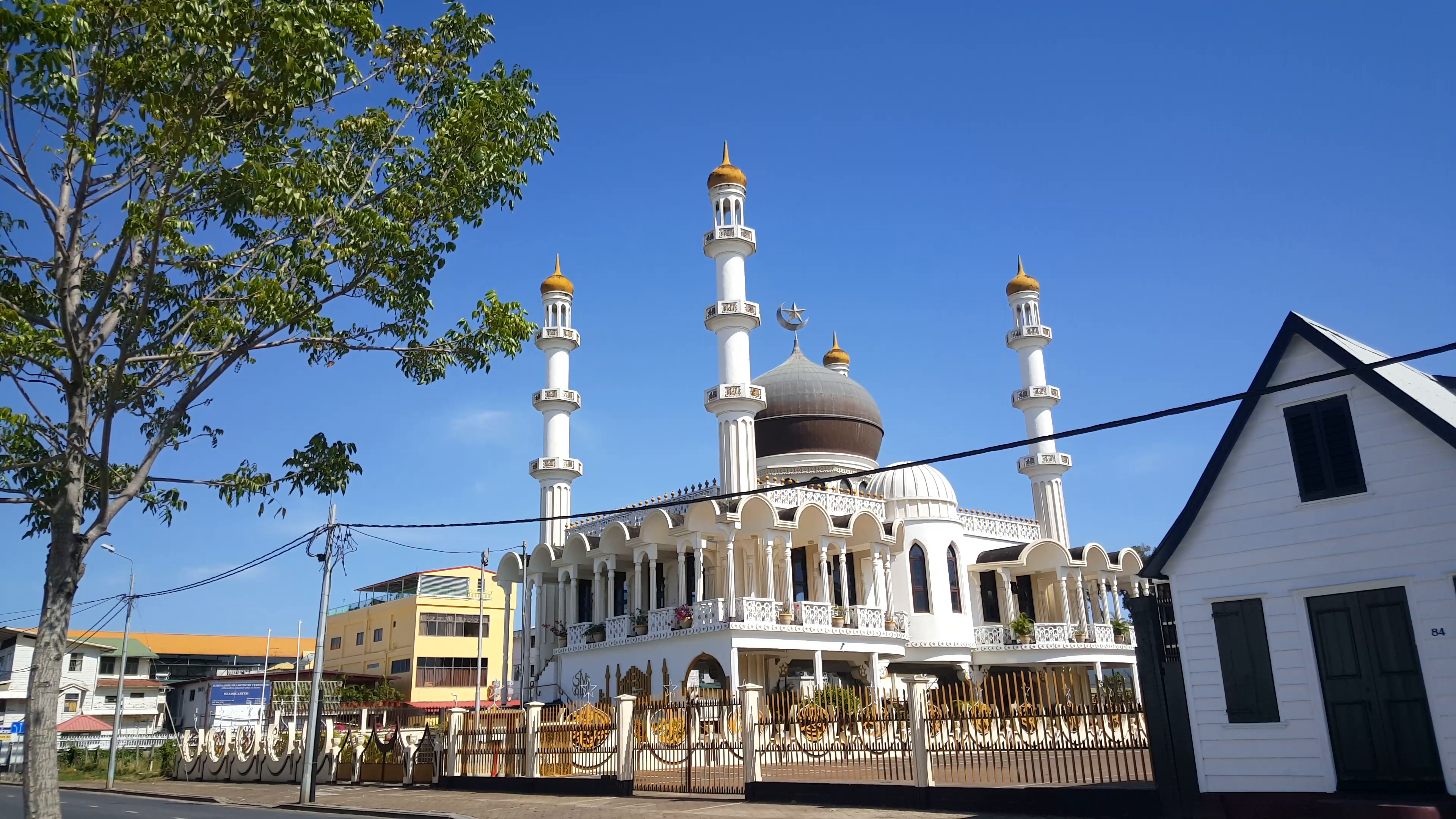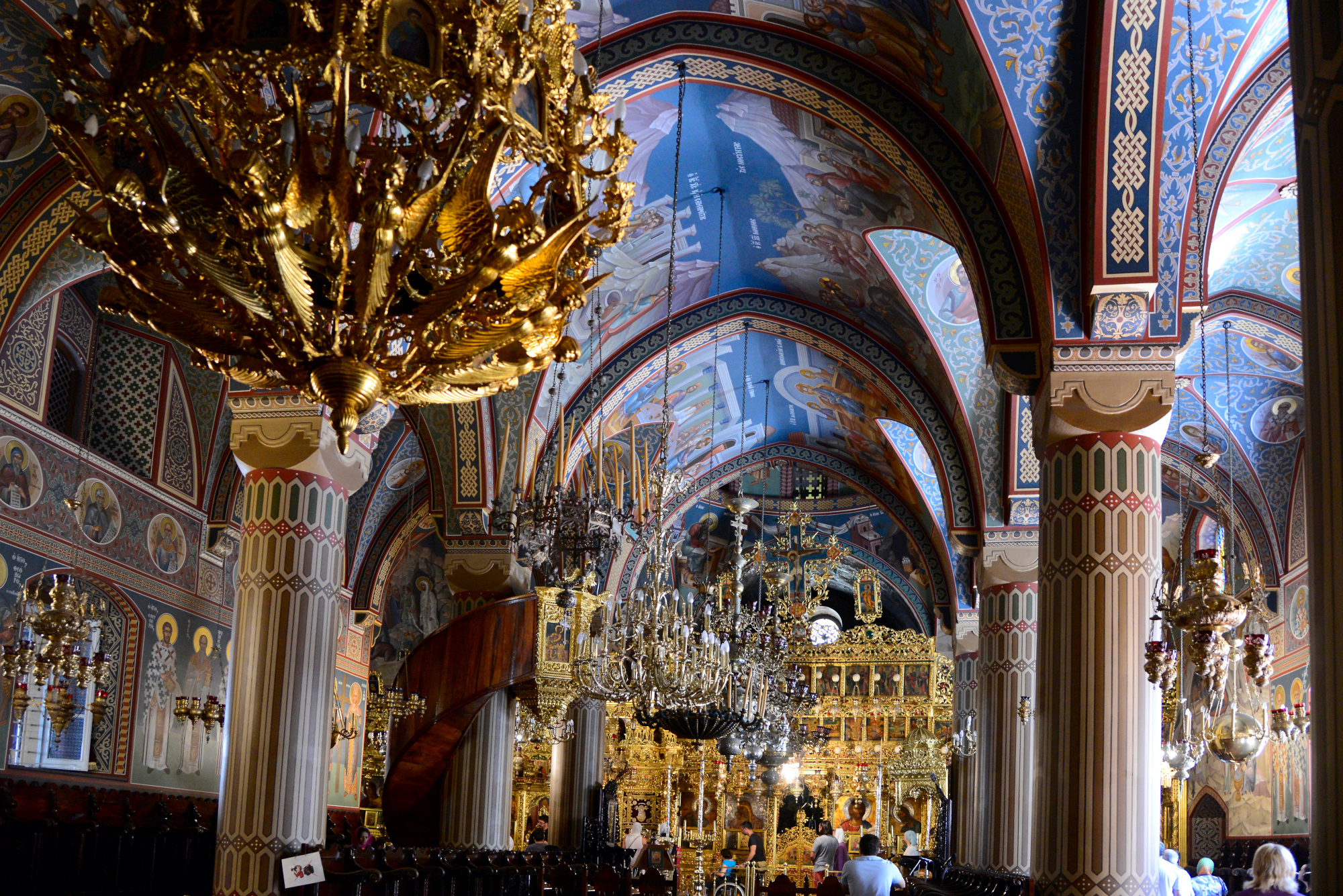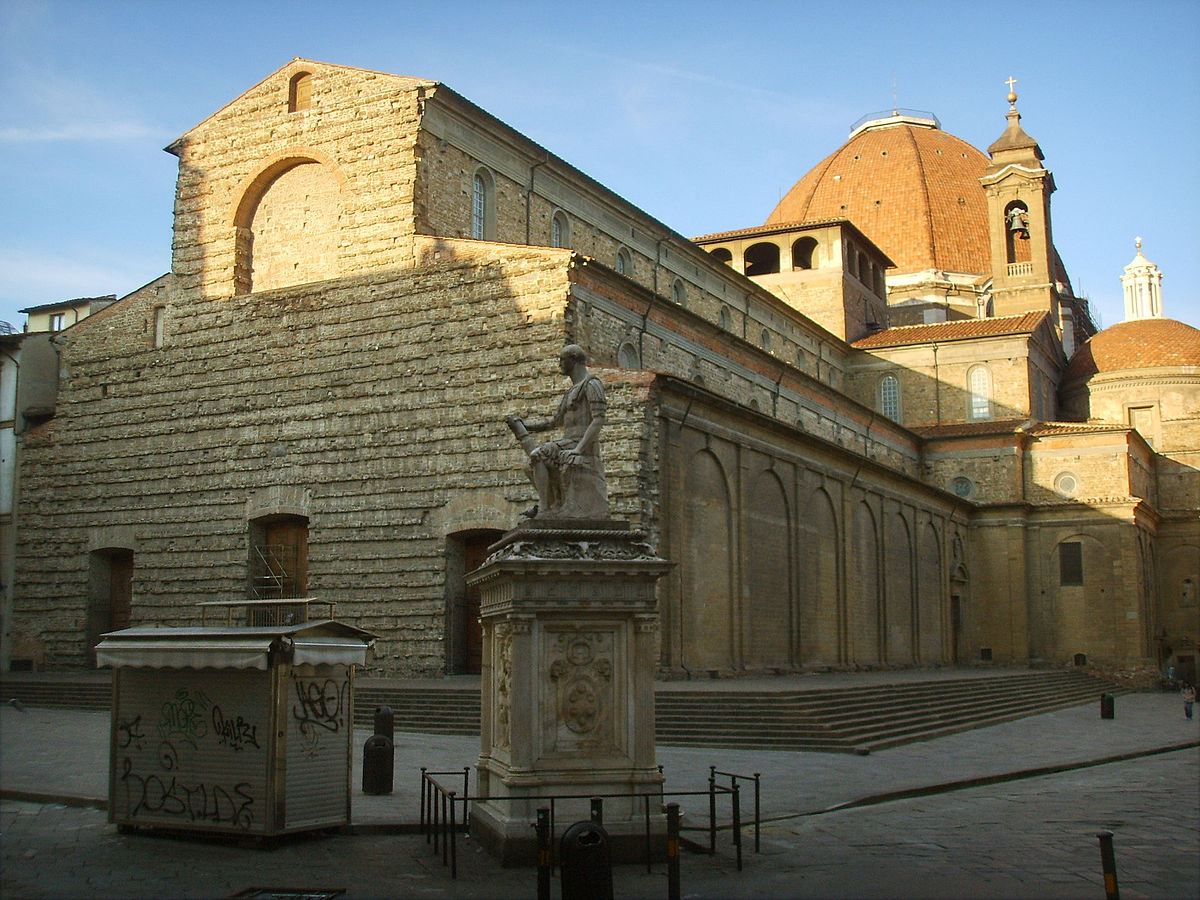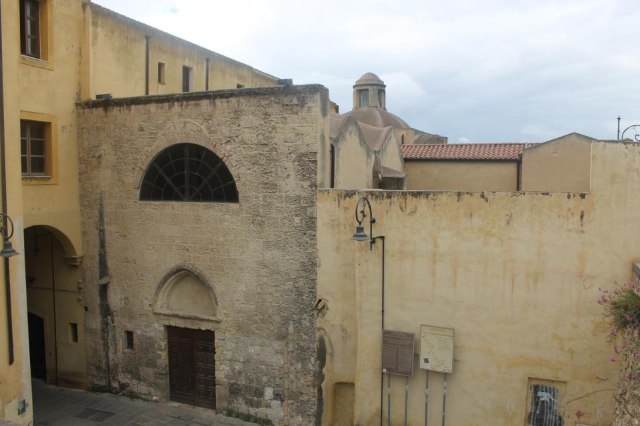Built in Romanesque style and realized under the Norman Roberto il Guiscardo in the XI century, the Cathedral of Salerno was consecrated by Pope Gregorio VII and presents a basilican type form with three longitudinal naves, the transept with between apses and the quadriporticus. The plan and shape of the cathedral was strongly desired by Alfano I and modeled on the abbey of Montecassino that the archbishop frequented assiduously.
The building was constructed in a very short time. The works began in 1080 at the behest of the new Norman princes and ended just 4 years later. Such a great example of religious and monumental architecture was built on the remains of an ancient building. Just think that to create the crypt, which now houses the remains of St. Matthew, were needed only 6 months.
As valuable as ancient is the door of the Cathedral of Salerno, cast in 1090 in Constantinople, containing 54 tiles with Byzantine crosses and characterized by a greenish color, typical of ancient bronze. On the outside, besides the high baroque facade and the imposing staircase, it is striking the strong and recurrent presence of animal statues such as: the two lions, the monkey, the dove etc., symbolic allusions to the strength and charity of the Church.
On the occasion of September 21, the feast day in honor of the patron saint of Salerno, St. Matthew, the eight bells of the bell tower ring in celebration.
The atrium of the Cathedral of Salerno, with its square plan, welcomes the visitor and accompanies him to the discovery of Salerno’s treasures kept inside the structure. In the center of the atrium, surrounded by a colonnade and surmounted by arches decorated with inlays of volcanic stone, there is an old baptismal font, but originally there should have been a monolithic fountain of Egyptian granite, stolen by Frederick IV of Bourbon and brought to Naples in 1820.
Moreover, in the portico of the Cathedral of Salerno there are some sepulchres such as that of Alfano I and Margherita di Durazzo, while other tombs have not been identified. On the southern side of the quadriporticus, the Arab-Norman bell tower of the Cathedral of Salerno stands out, rising 52 meters high.
Inside the Cathedral of Salerno, a seventeenth-century style seems to predominate but, looking carefully, traces of medieval past can be seen with the presence of Giotto’s frescoes in one of the aisles.
The brightness of the major apse captures the attention of the viewer, who is involved in observing the beauty of the representation of the Immaculate Virgin, immersed in a halo of light and surrounded by prominent figures and of fundamental importance to the city as: Alfano I, Pope Gregory VII, Robert Guiscard, Princess Sichelgaita and a whole series of Popes who found hospitality in Salerno.
Inside the Cathedral of Salerno, famous is the crypt that holds the remains of St. Matthew, patron saint of the city. Restored in Baroque style in the mid-seventeenth century, the crypt contains frescoes depicting scenes from the Gospel of St. Matthew and episodes from the history of Salerno. At the center of this is the tomb of the evangelist representing the Sancta Sanctorum.
